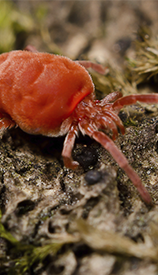Overview
Notoedric mange, also known as feline scabies, is caused by the mite Notoedres cati. These microscopic monsters attach themselves to your cat’s skin and, after mating, the female mites burrow beneath the skin. While all cats may contract notoedric mange, younger kitties are at greater risk. This nasty little bug is highly contagious and can spread from cat to dog or person.
Symptoms Mange can either be localized or affect specific areas of your cat’s body. In early, localized form, your pet may exhibit changes in behavior because the mange causes her to be so itchy. The areas she scratches will develop red papules resembling small pimples that will eventually crust over. In time, the impacted skin will become thickened and wrinkled. The symptoms from mange are thought to be the result of an allergy to the mite itself.
Mange can either be localized or affect specific areas of your cat’s body. In early, localized form, your pet may exhibit changes in behavior because the mange causes her to be so itchy. The areas she scratches will develop red papules resembling small pimples that will eventually crust over. In time, the impacted skin will become thickened and wrinkled. The symptoms from mange are thought to be the result of an allergy to the mite itself.
If the mange is left untreated, it will eventually spread throughout the rest of the body. Your cat’s hair may become matted; crusted sores will be seen on her forelegs, paws, and lower stomach. The itchiness will intensify, making her very uncomfortable.
Diagnosis/Treatment
In order to diagnose your cat, your veterinarian will perform a very thorough physical exam, ask about her behavior, and take skin scrapings of the affected areas. Your veterinarian may recommend other tests specific to your pet’s symptoms and the severity of the infestation.
The treatment for notoedric mange varies depending on the level of infection and your cat’s particular situation. It typically includes specialized shampoos or dips, topical preventives for fleas and heartworm, and regular vacuuming and cleaning of your cat’s bedding. In some situations, if a secondary bacterial infection has occurred, additional medications such as antibiotics are prescribed.
Prevention
The best preventive for notoedric mange is to keep your pet away from infected animals! Mites do not survive long in the environment, so direct contact is necessary for infection.
If you have any questions or concerns, you should always visit or call your veterinarian – they are your best resource to ensure the health and well-being of your pets.
 | Beware the Bug More about mites Sarcoptic Mange in Dogs Or learn more about dogs and parasites > |
